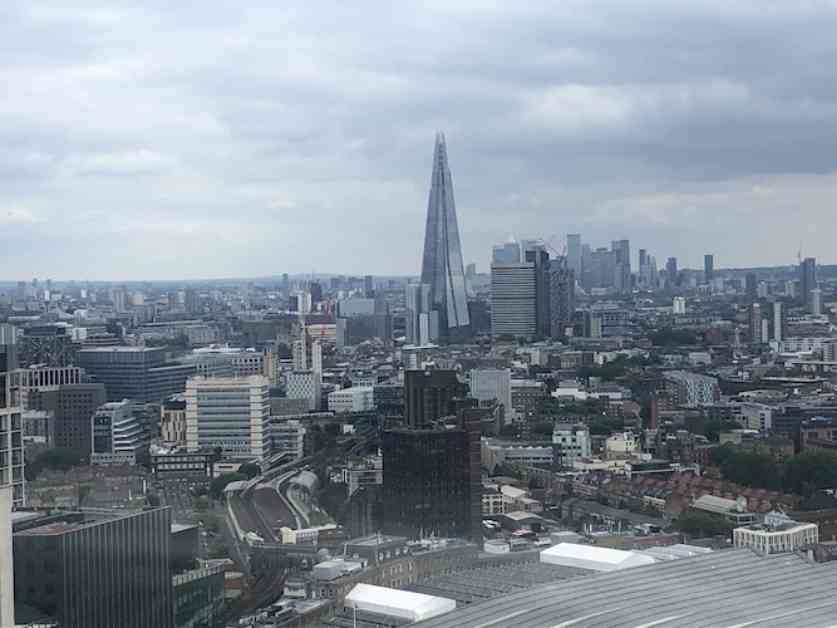London’s Return to the Office: A Deep Dive into Richard Brown’s Analysis
London, like many other major cities, has seen a slow return to office work following the disruptions caused by the COVID-19 pandemic. A recent report from the Centre for Cities sheds light on this trend, highlighting the factors contributing to Londoners’ reluctance to return to their desks compared to workers in other global cities such as Paris, New York, and Singapore.
The Return to the Office report, based on polling conducted in June, reveals that central London office workers are spending an average of 2.7 days per week in the office. This is less than their counterparts in other major cities but similar to those in Sydney and Toronto. Interestingly, office days in London are concentrated in the middle of the week, with a sharp drop-off on Fridays, when only 40 per cent of workers commute to work.
The report suggests that London’s sluggish return to the office can be attributed to two main factors. Firstly, London bosses are more hesitant than their counterparts in other cities to specify when employees need to be in the office. Secondly, while both workers and employers value in-person collaboration and relationship-building, London workers place a higher emphasis on the cost savings and flexibility offered by remote work compared to their counterparts in other cities.
The findings of the Centre for Cities report are in line with those of the King’s College Policy Institute’s London Returning survey of 2022. This survey found that while most London workers have a positive attitude towards being in the office, 80 per cent see avoiding the commute as a significant benefit of working from home.
To address the challenges posed by the slow return to the office, the London government implemented the “Off Peak Friday” trial on various transportation services. While the trial led to a modest increase in commuting on Fridays, awareness and uptake were limited. Deputy Mayor for Business Howard Dawber highlighted that City Hall is still evaluating the outcomes of the trial to determine its effectiveness in encouraging office attendance.
The high commuting costs and inconveniences associated with traveling to London pose a significant barrier to a full return to the office. Despite efforts to promote off-peak travel, many commuters face challenges such as expensive fares and unreliable service on lines outside the mayor’s jurisdiction. These factors contribute to the hesitance among workers, especially older ones, to return to the office.
One notable trend observed in London is the preference of younger workers for in-person office work. Younger employees, who are more likely to reside in the city, find the office environment conducive to their productivity and professional growth. In contrast, older workers, many of whom commute from the Home Counties, have grown accustomed to remote work during the pandemic.
During a panel discussion at the Centre for Cities launch event, experts highlighted the plateauing of the return to the office in London. The pandemic has accelerated the shift towards flexible work arrangements, raising questions about the long-term impact on productivity and organizational culture. While hybrid working offers individual productivity benefits, concerns remain about its effects on skills development, career advancement, and team collaboration.
The ongoing transition to hybrid work patterns has significant implications for various segments of the workforce. Women, in particular, have benefited from the flexibility of remote work, allowing them to balance professional responsibilities with caregiving duties. Mercer’s research underscores the importance of flexible working incentives in retaining female employees and promoting gender equality in the workplace.
As London adapts to the changing dynamics of office work, suburban areas are emerging as potential hubs for economic activity. While central London grapples with shifting work patterns, suburban regions are experiencing growth and revitalization. Additionally, the diversification of activities in central London, beyond traditional office spaces, presents opportunities for leisure and cultural development.
In conclusion, the slow return to the office in London reflects broader shifts in working culture and urban dynamics. While the current equilibrium may seem stable, external factors such as climate change and technological advancements could reshape the future of office work. As London navigates this period of rapid change, policymakers, employers, and workers must collaborate to create a flexible and inclusive work environment that meets the needs of a diverse workforce.





















